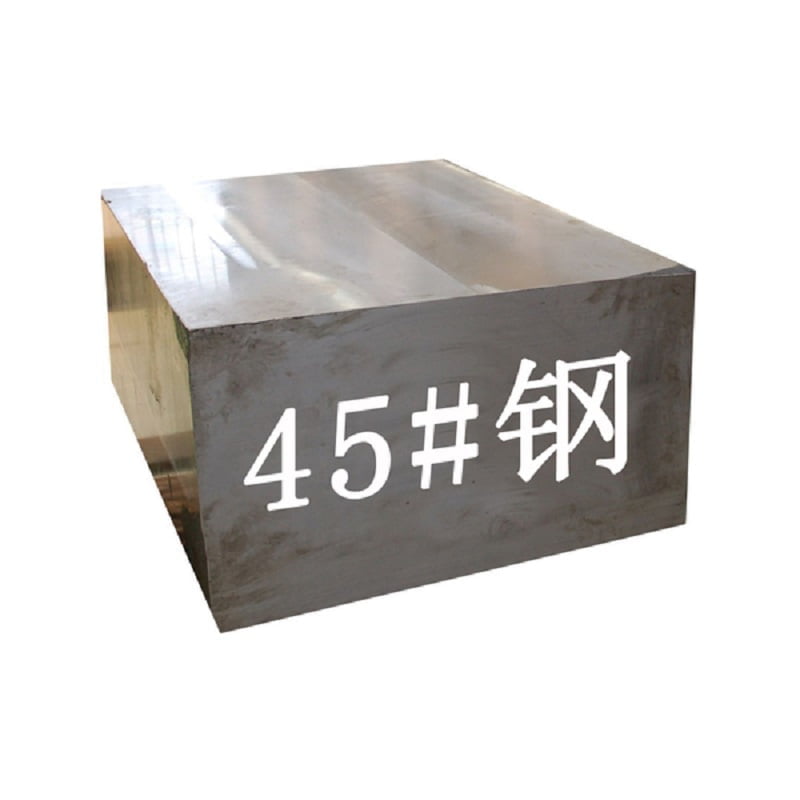
introduzione
S45C e S55C sono gradi popolari di acciaio a medio carbonio comunemente utilizzati in varie applicazioni di ingegneria e produzione. Questo articolo fornisce un confronto dettagliato tra S45C e S55C, utilizzando tabelle per presentarne le composizioni chimiche, le proprietà meccaniche, le risposte al trattamento termico, le applicazioni e i vantaggi/svantaggi per una migliore chiarezza e comprensione.
Composizione chimica
La composizione chimica di un tipo di acciaio è fondamentale per determinarne le proprietà meccaniche e l'idoneità per applicazioni specifiche.
| Elemento | Composizione S45C (%) | Composizione S55C (%) |
|---|---|---|
| Carbonio (C) | 00,42% – 0,48% | 00,50% – 0,60% |
| Manganese (Mn) | 00,60% – 0,90% | 00,60% – 0,90% |
| Fosforo (P) | 00,03% massimo | 00,03% massimo |
| Zolfo (S) | 00,03% massimo | 00,03% massimo |
Spiegazione della Composizione Chimica
- Carbonio (C): La differenza principale è il contenuto di carbonio. S45C ha un contenuto di carbonio compreso tra 0,42% e 0,48%, mentre S55C ha un intervallo leggermente superiore compreso tra 0,50% e 0,60%. Un contenuto di carbonio più elevato nell'S55C ne migliora la durezza e la resistenza.
- Manganese (Mn): Entrambi i gradi contengono una gamma simile di manganese, importante per disossidare l'acciaio e migliorare la temprabilità.
- Fosforo (P) e Zolfo (S): Queste sono considerate impurità nell'acciaio. Entrambi i gradi hanno le stesse percentuali massime consentite, il che aiuta a ridurre la fragilità.
Proprietà meccaniche
Le proprietà meccaniche sono fondamentali per determinare le prestazioni di un materiale sotto vari fattori di stress.
| Proprietà | S45C | S55C |
|---|---|---|
| Carico di snervamento (MPa) | Circa 355 MPa | Circa 400MPa |
| Resistenza alla trazione (MPa) | 570 – 700MPa | 650 – 800MPa |
| Allungamento (%) | 14% (minimo) | 12% (minimo) |
| Durezza (HB) | 170 – 210 HB | 190 – 230 HB |
Spiegazione dettagliata delle proprietà meccaniche
- Resa: S55C ha un carico di snervamento maggiore rispetto a S45C, il che significa che può sopportare maggiori sollecitazioni prima di deformarsi.
- Resistenza alla trazione: La resistenza alla trazione dell'S55C supera anche quella dell'S45C, rendendolo più adatto per applicazioni che comportano un carico significativo.
- Allungamento: L'allungamento si riferisce alla capacità dell'acciaio di allungarsi prima di rompersi. S45C mostra un allungamento maggiore, indicando che può subire una maggiore deformazione plastica.
- Durezza: S55C è generalmente più duro dell'S45C, contribuendo alla sua migliore resistenza all'usura.
Risposte al trattamento termico
Il trattamento termico può influenzare notevolmente le proprietà meccaniche degli acciai al carbonio.
| Tipo di trattamento termico | S45C | S55C |
|---|---|---|
| tempra | Può essere indurito mediante trattamento di tempra | Può raggiungere una maggiore durezza attraverso la tempra |
| rinvenimento | Riduce la fragilità mantenendo la forza | Migliora la tenacità mantenendo la durezza |
Spiegazione del trattamento termico
- tempra: Entrambi i gradi possono essere induriti mediante tempra, ma S55C, a causa del suo contenuto di carbonio più elevato, tende a raggiungere una durezza maggiore dopo la tempra.
- rinvenimento: Dopo la tempra, un processo di rinvenimento può migliorare la tenacità e ridurre la potenziale fragilità, che è essenziale per i componenti che devono sopportare carichi di impatto.
Applicazioni
S45C e S55C sono utilizzati in varie applicazioni in base alle loro proprietà meccaniche.
| Applicazione | S45C | S55C |
|---|---|---|
| Ingranaggi | Comunemente usato | Adatto per ingranaggi sottoposti a sollecitazioni elevate |
| Aste | Spesso usato | Utilizzato in alberi ad alte prestazioni |
| Parti di macchine | Parti di ingegneria generale | Componenti che richiedono una resistenza maggiore |
| Utensili | Non comunemente usato | Applicabile per utensili da taglio e matrici |
| Componenti automobilistici | Spesso usato | Applicazioni critiche (ad esempio alberi a gomiti) |
Spiegazione delle applicazioni
- S45C: La sua resistenza equilibrata e la sua lavorabilità lo rendono adatto per applicazioni di ingegneria generale, come ingranaggi e alberi.
- S55C: Il contenuto di carbonio più elevato si presta ad applicazioni che richiedono maggiore resistenza e durezza, come utensili da taglio e componenti automobilistici ad alte prestazioni.
Vantaggi e svantaggi
Sia S45C che S55C presentano vantaggi e svantaggi unici.
| Aspetto | S45C | S55C |
|---|---|---|
| Vantaggi | – Buona lavorabilità | – Maggiore resistenza e durezza |
| – Conveniente per applicazioni generali | – Ottima resistenza all’usura | |
| – Proprietà equilibrate | – Adatto per ambienti ad alto stress | |
| Svantaggi | – Resistenza inferiore rispetto a S55C | – Lavorabilità ridotta |
| – Durezza limitata | – Costo maggiore rispetto a S45C |
Spiegazione dettagliata di vantaggi e svantaggi
- Vantaggi dell'S45C: La sua buona lavorabilità e il rapporto costo-efficacia lo rendono adatto a varie applicazioni di ingegneria generale.
- Svantaggi S45C: La resistenza e la durezza inferiori possono limitarne l'efficacia nelle applicazioni ad alto stress.
- Vantaggi dell'S55C: La robustezza e la resistenza all'usura migliorate lo rendono adatto per applicazioni impegnative.
- S55C Svantaggi: Una maggiore durezza può rendere più difficile la lavorazione, aumentando potenzialmente i costi di produzione.
Conclusione
La scelta tra S45C e S55C richiede un'attenta considerazione dei requisiti specifici dell'applicazione. S45C fornisce un equilibrio tra resistenza e lavorabilità, rendendolo adatto per uso ingegneristico generale, mentre la maggiore resistenza e durezza di S55C lo rendono ideale per applicazioni che richiedono prestazioni migliorate sotto stress e usura. Comprendere le differenze nella composizione chimica, nelle proprietà meccaniche, nelle risposte al trattamento termico e nelle applicazioni aiuterà ingegneri e produttori a effettuare selezioni informate dei materiali su misura per le esigenze dei loro progetti.
